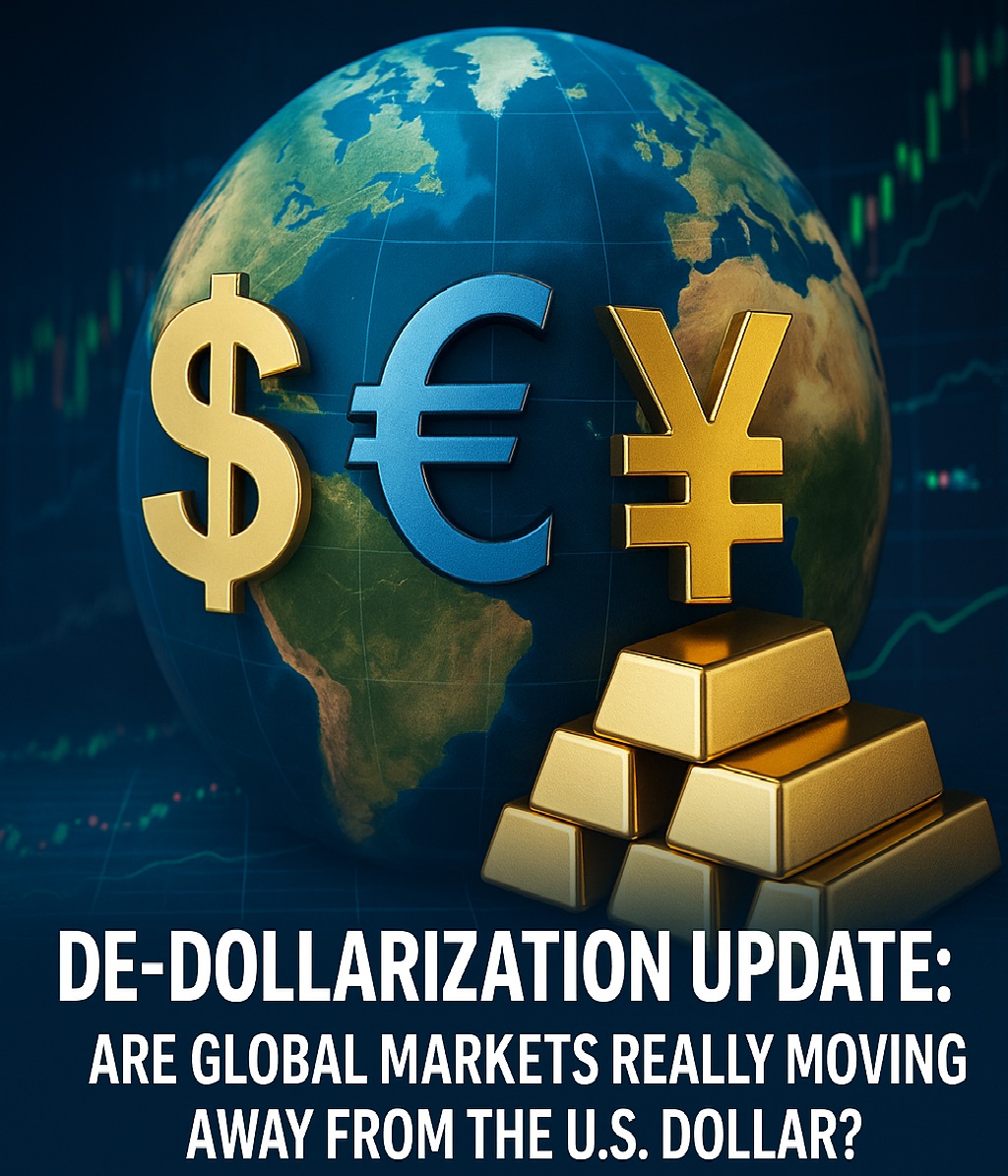The U.S. Dollar’s Reign Under Pressure
For decades, the U.S. dollar (USD) has been the dominant global reserve currency. From oil transactions to international trade settlements, the greenback has long stood as a pillar of the global financial system. But in 2025, a growing trend—de-dollarization—is gaining momentum.
What does this shift mean for investors, policymakers, and everyday savers? Let’s break it down.
What Is De-Dollarization?
De-dollarization refers to the global shift away from using the U.S. dollar in international trade, finance, and reserves. It’s a phenomenon that’s gaining traction as countries seek greater monetary sovereignty and protection from U.S. sanctions and monetary policy decisions.
Why Are Countries Moving Away from the Dollar?
1. Geopolitical Tensions and Sanctions
U.S. economic sanctions have prompted countries like Russia, China, and Iran to explore alternatives to the dollar in bilateral trade.
2. The Rise of BRICS and Alternative Alliances
In 2024, the BRICS alliance expanded, adding nations that collectively push for a multipolar currency system. Their aim? Reduce dependency on Western financial systems.
3. Diversification of Foreign Exchange Reserves
Central banks are increasing their holdings in gold, Chinese yuan, and the euro. In fact, IMF data from Q1 2025 shows USD share in global reserves falling below 58%, its lowest in decades.
Is the Dollar Losing Its Dominance?
While the dollar remains the top reserve currency, it’s clear that its dominance is gradually eroding.
- SWIFT data shows increasing usage of the Chinese yuan in trade settlements.
- Middle Eastern nations are pricing oil in currencies other than USD.
- CBDCs (Central Bank Digital Currencies) are accelerating the move toward currency diversification.
🔍 Expert Insight:
“We’re not witnessing the death of the dollar, but rather the emergence of a more competitive and decentralized monetary system.” — Dr. Elena Meyer, Economist at Oxford Global Finance
Impacts on Global Markets
Volatility in Forex Markets
As more nations reduce dollar holdings, we’re seeing higher currency volatility, especially in emerging markets.
Shifts in Commodity Pricing
Commodities traditionally priced in USD—like oil and gold—may begin to reflect multi-currency pricing models.
Investment Strategies Evolving
Global investors are rethinking their asset allocations, adding non-dollar denominated assets, emerging market bonds, and commodities.
What Should Investors and Savers Do?
Top Financial Tips:
- Diversify your portfolio with exposure to foreign equities and currencies.
- Consider gold ETFs or precious metal assets as a hedge.
- Stay updated on geopolitical trends that influence currency realignment.
A Dollar Decline or a Monetary Evolution?
While the U.S. dollar isn’t disappearing anytime soon, 2025 marks a pivotal year in the conversation around global currency power. The rise of alternative systems, regional alliances, and digital currencies point to a future where financial multipolarity becomes the norm.
As always, financial education is your greatest asset in navigating these changes.



